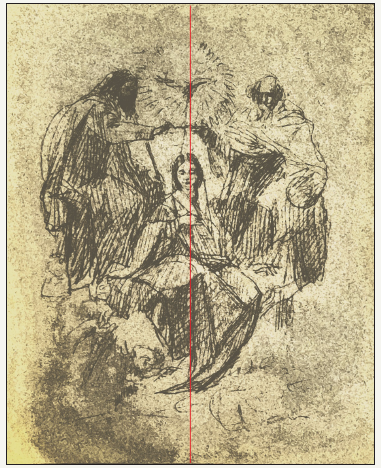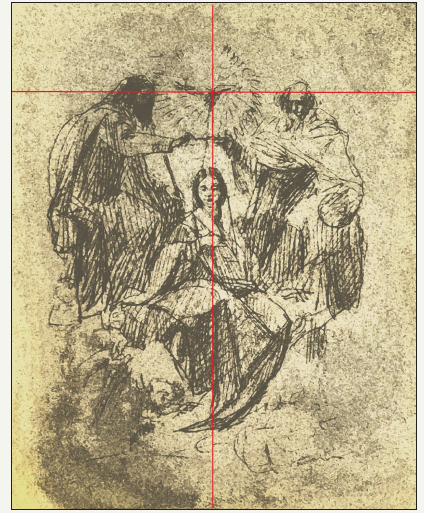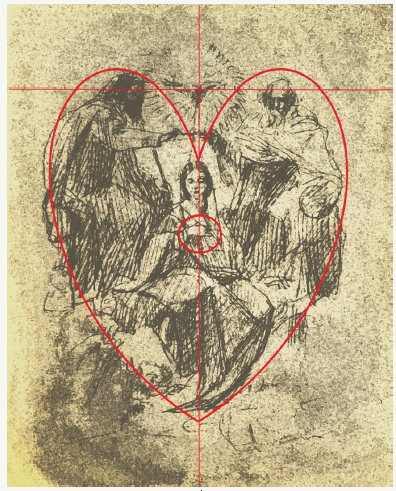- Submissions

Full Text
Trends in Textile Engineering & Fashion Technology
The Use of Clothes as Compositional and Symbolic Elements in the Work “The Coronation of the Virgin” by Diego Velázquez
Daniel Bilbao Peña*
Department of Drawings, University of Seville, Spain
*Corresponding author: Daniel Bilbao Peña, Departament of Drawing´s, Fine Arts Faculty, University of Seville, Spain
Submission: October 09, 2018;Published: October 16, 2018

ISSN 2578-0271 Volume4 Issue2
Abstract
During the Baroque period, one of its most characteristic plastic resources was the empowerment of the movement of the characters and their clothing providing complex rhythms to the compositions.
Development
In the group of works painted by Diego Velázquez and Silva (Seville, 1599-Madrid, 1660) they emphasize their mastery of space and light, typical of this time, as well as the study of complex compositions such as the famous painting “Las Meninas”. But it is the painting “The Coronation of the Virgin” (Figure 1), made for the oratory of Queen Isabel de Borbón in the Alcázar of Madrid, in 1635-1636 where the compositional distribution according to a symbolic content.
Figure 1:From the Coronation of the Virgin 1635-1636, Diego Velazquez, Museo del Prado, Madrid.

Figure 2:Geometrical axis symmetrical composition.

Figure 3:Horizontal axis symbolically equals in rank the three figures of the Trinity

If we look at the composition of the table, we can see how it is distributed around a vertical symmetric axis. That axis is the geometrical axis and on it, are placed the Dove (symbol of the Holy Spirit) the Crown and the Virgin. On each side of the upper part are represented two male figures, on the left the youngest representing Jesus Christ and on the right to God the Father, as an elderly person, both with long hair and beards, attending to the traditional iconography (Figure 2). Aligned horizontally with these two heads, the Dove appears in the center, symbolically assigning them the same rank, in terms of importance, by placing them on the same level. (Figure 3).
Figure 4:Composition-symbology heart defined by the clothing of the compositional ensemble.

The clothes of the three main characters share a range of color ranging from blue to purple and carmine. The latter appear in Europe after the discovery of America, since pigment (Dactylopius coccus) was extracted from an American insect. These pigments reached greater intensity than those known as Carmine Florentines and, although Francisco Pacheco initially recommended the use of Italian´s carmine, in his treatise on The Art of Painting-Tratado del Arte de la Pintura [1], they ended up being imposed given their staining properties. Regarding the composition, we can discover relations with symbolic character that are even more complex and that encompass the perimeter defined by the clothes of the characters. If we look at the outline of the whole, we can appreciate the shape of a well-defined heart (Figure 4).
This symbolic figure represents in the heart the love of the Virgin completing the meaning by pointing out to herself her own heart at the center of the composition (Figure 5). Velázquez plays in this sense with iconographic, symbolic and conceptual aspects, anticipating his time in the application of these contents on this work. Later, similar visual phenomena would be the subject of study both in the theory of perception and in Gestalt theory at the beginning of the 20th century, being Rudolf Arheim who deepens in its application to art in his book Art and Visual Perception: A Psychology of the Creative Eye [2]. Painters such as Magritte or Dalí would frequently apply this phenomenology in their works.
Figure 5:Symbology hand of the Virgin pointing her own heart.

References
- Pacheco F (1649) Art of painting, its antiquity and greatness.
- Arnheim R (2004) Art and visual perception: A psychology of the creative eye. University of California Press, USA.
© 2018 Daniel Bilbao Peña . This is an open access article distributed under the terms of the Creative Commons Attribution License , which permits unrestricted use, distribution, and build upon your work non-commercially.
 a Creative Commons Attribution 4.0 International License. Based on a work at www.crimsonpublishers.com.
Best viewed in
a Creative Commons Attribution 4.0 International License. Based on a work at www.crimsonpublishers.com.
Best viewed in 







.jpg)






























 Editorial Board Registrations
Editorial Board Registrations Submit your Article
Submit your Article Refer a Friend
Refer a Friend Advertise With Us
Advertise With Us
.jpg)






.jpg)














.bmp)
.jpg)
.png)
.jpg)










.jpg)






.png)

.png)



.png)






